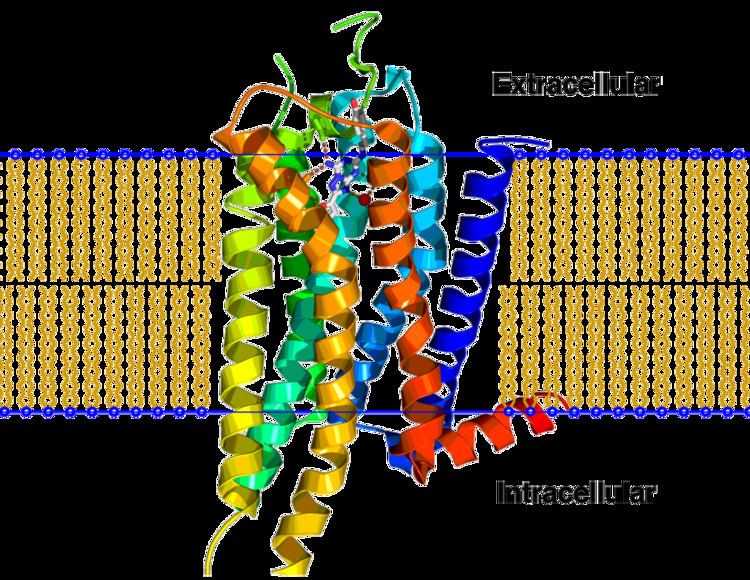Entrez 135 | Ensembl ENSG00000128271 | |
 | ||
External IDs MGI: 99402 HomoloGene: 20166 GeneCards: ADORA2A | ||
The adenosine A2A receptor, also known as ADORA2A, is an adenosine receptor, and also denotes the human gene encoding it.
Contents
Structure
This protein is a member of the G protein-coupled receptor (GPCR) family which possess seven transmembrane alpha helices. The crystallographic structure of the adenosine A2A receptor reveals a ligand binding pocket distinct from that of other structurally determined GPCRs (i.e., the beta-2 adrenergic receptor and rhodopsin).
Heteromers
The actions of the A2A receptor are complicated by the fact that a variety of functional heteromers composed of a mixture of A2A subunits with subunits from other unrelated G-protein coupled receptors have been found in the brain, adding a further degree of complexity to the role of adenosine in modulation of neuronal activity. Heteromers consisting of adenosine A1/A2A, dopamine D2/A2A and D3/A2A, glutamate mGluR5/A2A and cannabinoid CB1/A2A have all been observed, as well as CB1/A2A/D2 heterotrimers, and the functional significance and endogenous role of these hybrid receptors is still only starting to be unravelled.
The receptor's role in immunomodulation in the context of cancer has suggested that it is an important immune checkpoint molecule.
Function
The gene encodes a protein which is one of several receptor subtypes for adenosine. The activity of the encoded protein, a G protein-coupled receptor family member, is mediated by G proteins which activate adenylyl cyclase, which induce synthesis of intracellular cAMP.
The encoded protein (the A2A receptor) is abundant in basal ganglia, vasculature, T lymphocytes, and platelets and it is a major target of caffeine, which is a competitive antagonist of this protein.
Physiological role
As with the A1, the A2A receptors are believed to play a role in regulating myocardial oxygen consumption and coronary blood flow. In addition, A2A receptor can negatively regulate overreactive immune cells, thereby protecting tissues from collateral inflammatory damage.
The A2A receptor is responsible for regulating myocardial blood flow by vasodilating the coronary arteries, which increases blood flow to the myocardium, but may lead to hypotension. Just as in A1 receptors, this normally serves as a protective mechanism, but may be destructive in altered cardiac function.
The A2A receptor is also expressed in the brain, where it has important roles in the regulation of glutamate and dopamine release, making it a potential therapeutic target for the treatment of conditions such as insomnia, pain, depression, drug addiction and Parkinson's disease.
Ligands
A number of selective A2A ligands have been developed, with several possible therapeutic applications.
Older research on adenosine receptor function, and non-selective adenosine receptor antagonists such as aminophylline, focused mainly on the role of adenosine receptors in the heart, and led to several randomized controlled trials using these receptor antagonists to treat bradyasystolic arrest.
However the development of more highly selective A2A ligands has led towards other applications, with the most significant focus of research currently being the potential therapeutic role for A2A antagonists in the treatment of Parkinson's disease.
Interactions
Adenosine A2A receptor has been shown to interact with Dopamine receptor D2. As a result, Adenosine receptor A2A decreases activity in the Dopamine D2 receptors.
